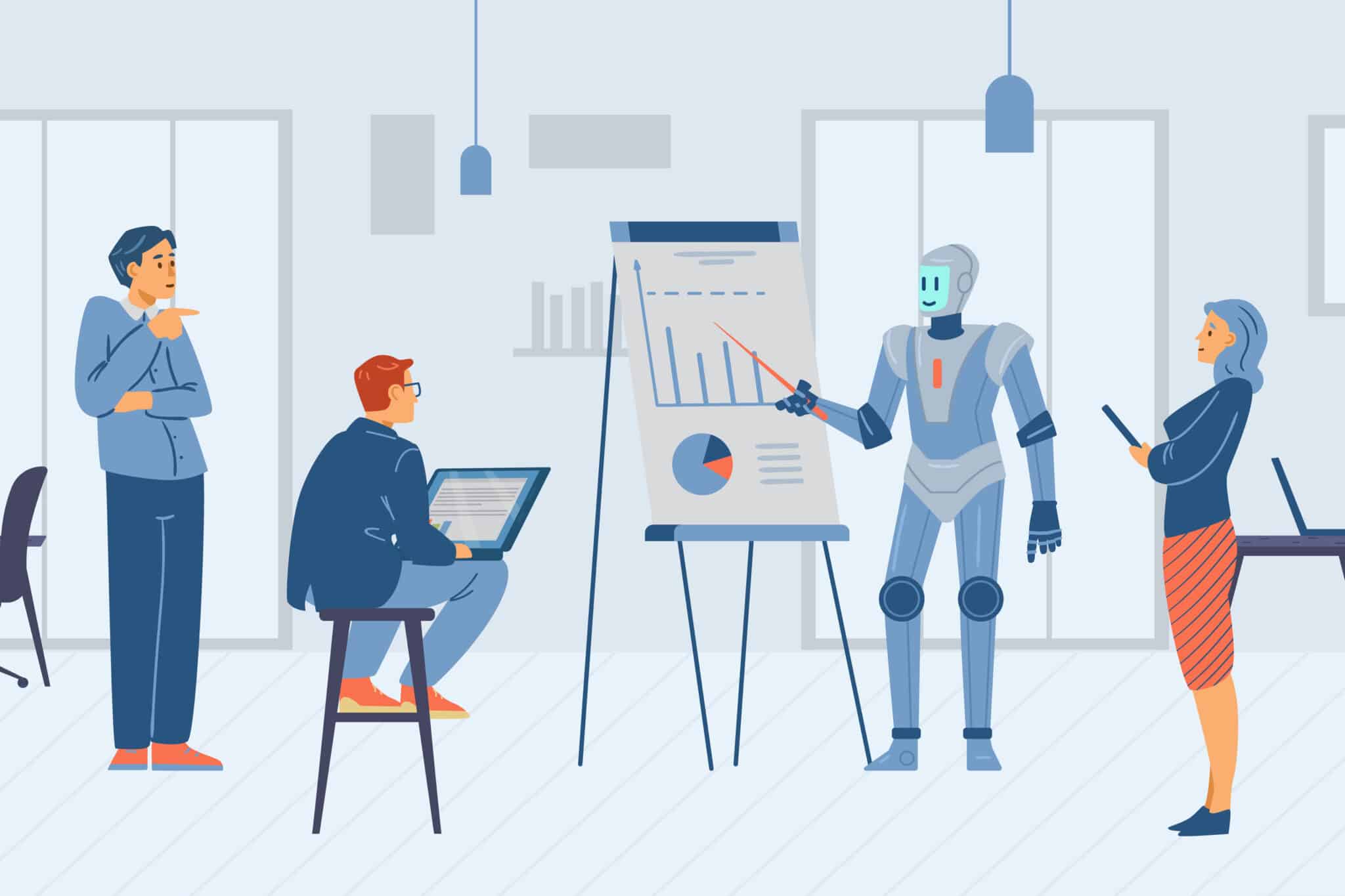5 ways AI can help your decision-making

If you’re a modern business leader (and you don’t live under a rock), you’ve almost definitely heard a lot about artificial intelligence and the ways it could change your operations. Maybe you’ve considered incorporating AI decision-making into your business, but you’re unsure where to start.
CEOs Adrienne Wilkerson and Michael Stratta know that when you’re at the head of the company, there are many decisions to make every single day — and AI can help you make faster, more well-informed ones.
For Wilkerson and Stratta, “AI-driven” is just a new, super-efficient way to say “data-driven.” With that in mind, here are five areas you can incorporate AI into your decision-making.
1. Business operations
On a day-to-day basis, AI tools can help streamline repetitive or tedious tasks that eat up precious time. They can also improve organization and workflow since AI is designed to make working with raw data as efficient as possible.
“I just think about the amount of Excel sheets I used to have to juggle, and now I just shove it all into AI and let it spin out,” Wilkerson says.
It can also be used to help write internal communications — such as delivering difficult messages where it helps to have an unbiased voice. It can be effective in managing the recruitment process as well, especially for resume screening and candidate matching.
2. Complex problem-solving
Though AI lacks the intuition and innovative ideas of a human being, the wealth of information most models access can make problem-solving much easier.
“One of the most powerful things that AI is doing for us right now is that we can process much more significant amounts of data than we ever have been able to before,” Wilkerson explains.
AI models are especially useful when conducting risk assessment or adjusting pricing, as a primary aspect of their design is recognizing and predicting trends.
AI can do the hard work of putting immense amounts of data regarding the production chain, market dynamics, potential restrictions and more into a format that makes sense.
“To be able to predict those patterns further out in advance means a reduction in downtime,” Stratta adds. “Reduction in downtime means increased efficiency, or increased revenues and profitability.”
3. Changing your strategy on the fly
For AI models that have access to the updated Internet, perhaps their most useful function is as research tools. The ability to search and summarize huge amounts of information very quickly can be extremely useful when it comes to pivoting strategies or making big decisions on short notice.
“If I have only 20 minutes to make a decision, historically I might have only been able to collect 30% of the information I’m relying on,” Wilkerson says. “Now with AI, in 20 minutes we can gather maybe 70% of the information — or 50% more than what we could have before.”
In addition to doing research, AI can generate customer personas and similar assets that are useful when planning strategies and targeting particular markets.
The current state of marketing is such that there are endless opportunities to reach new audiences, and less and less time to act on them — a dilemma Stratta is very familiar with.
“We have to be able to define strategy and provide a focus for the organization, and the ability for machine learning to quickly determine patterns in large data sets is the key to accurate, efficient decision-making,” says Stratta.
4. Dealing with customers
Most customers dislike having their questions handled by AI, especially when their problem is more complex. But that doesn’t mean AI can’t have its uses in customer service. For instance, a custom AI chatbot trained exclusively on your company’s datasets can easily direct customers to the right resources to help them get further information.
“You can have a ChatGPT-like conversation where the answers are all being divined from your library of content, not the world’s library of content,” Stratta explains. “And so in that case, it’s as if the customer is talking to the best employee at the organization that has all the answers.”
For Wilkerson, it’s about balancing the efficiency of AI with the need customers have for a human touch. She uses the data-gathering capabilities of AI to supplement interactions with customers rather than replacing them entirely.
“It gives us the right data to interact with the client and saves us time at analyzing and diagnosing what the problem is,” she says. “But it can’t replace people in customer service yet, and I kind of hope it never totally does.”
5. Assessing performance
When it comes to evaluating the performance of both a company overall and its employees, AI tools make tracking and analyzing performance metrics easier. A well-designed AI can remove potential biases from the process, too.
“It helps us standardize our assessments in every category, whether it’s on a personal level or in marketing or maintenance,” Stratta says. “That which is not measured is not managed.”
By collecting and analyzing performance data, AI gives business leaders the information they need to spot potential problems before they rear their heads. They can then intervene by giving lagging employees the resources and support they need to do their best work. AI can even make suggestions as to what the most appropriate resources for that might be.
‘AI as a co-pilot’
Though both Wilkerson and Stratta have encountered fear and resistance around the idea of AI in the workplace, they both know that AI is first and foremost a tool, and shouldn’t be considered an existential threat. Human wisdom and intuition are always needed to put the data that AI gathers into context.
“I could go and get an answer to an academic question or a tactical question, but without context, the answer is just pure information,” Stratta says.
For Wilkerson, she focuses on balance, and thinking of AI as a powerful resource to be used in moderation just like any other. “It’s thinking of AI as that co-pilot, not as something that’s replacing me, and knowing that I’m still in the pilot seat.”
Related Resources
AI best practices: 3 CEOs share how they are using emerging technologies
Category: Technology
Tags: AI, artificial intelligence, Technology

